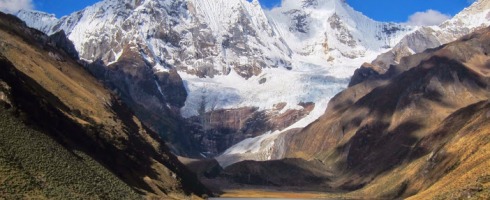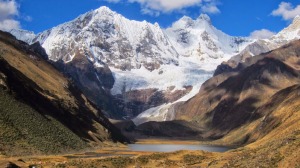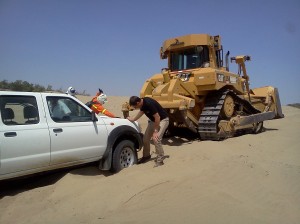I knew I’d want to write a post about “the end.” I like closure. I like acknowledging “this is it.” I’ve been periodically highlighting markers that are leading to the final “moment” — Twitter countdowns until the end of my days in Olmos, “last birthday in Peru” blog posts, “thank you for your support these last two years” emails, etc. As the most comprehensive outlet for my storytelling, I’ve been saving my deepest thoughts for the final post on “Betty Zee in PC.” This blog has been one of my greatest pleasures since I left Miami two years ago. Writing has become one of my favorite hobbies, a joy reiterated by the fact that I felt I finally had something to say, a story to tell. Writing is an electrifying process: the initial jot down of disjoint ideas, going through them a thousand times, carefully editing words and watching them transform into personal memoirs. I know for a fact not a lot of people are reading these posts, a result of deactivating my Facebook account and summarily eliminating my largest online connection to an audience, but my interest in the act of writing and recording experiences remains the same. I imagine one day I’ll be glad I stuck with it, when nostalgia strikes and all I’ll have of Peru are these stories to read through once again.
But alas, this post marks the “end” end. Today is my last day in South America. Tomorrow, before the sun rises over Cartagena’s colonial streets I’ll be en route northward, crossing continents and oceans on my way to San Francisco. It doesn’t matter that Northern California is not even remotely near what I consider “home.” Ironically, I might actually be geographically closer to Miami from Cartagena, Colombia than from the American west coast. The important thing here is not that I am going to the US, but the fact that I am leaving Latin America, indefinitely.
For friends and family who have been constant companions throughout my time away, it’ll come as no surprise to read how Peace Corps, and everything that experience encompasses, has changed me to the core. I think it’ll be years before I can really understand the full implications, so I’ll bypass any attempt to start now. But for my last blog post, I want to focus on one of the strongest sentiments present as I prepare to leave tomorrow: Recognizing my personal connection to the rich cultural heritage inherent in Latin America.
On July 15, I officially became a Returned Peace Corps Volunteer (RPCV) after successfully completing two years of service in Olmos, Lambayeque. Immeadiately after, a group of volunteers and I organized an 8-day, 124 KM (77 mi) hiking trek around the Huayhuash mountain range in the central Andean province of Ancash. In all honesty, it was a wild undertaking on my part, knowing we’d hike over 5,000m (16,oooft) mountain passes and camp every night in below-freezing temperatures, but that’s exactly what drew me in. Even Liz, a fellow volunteer and experienced hiker thoughtfully mentioned “It’s interesting that you are spending your last days in Peru on this hike.” It was outrageous by any standards, but so is everything else I’ve done on this continent. What better way to end two years of the greatest mental, emotional and psychological challenge than with the greatest physical challenge I’ve ever undertaken? I knew the 7-to-8 hours of hiking every day would give me more than enough time to reflect on life, and it wouldn’t hurt to have snow-peaked mountains looming over, providing the picturesque scenery befitting this kind of introspection.
As I hiked, walking stick in hand, the thin mountain air forcefully entering and exiting my lungs, I became overwhelmed with the immense beauty of the entire journey, from the tiny mountain town where we started our hike to the long stretches of nothingness in each valley we crossed. Sometimes I couldn’t believe what I was staring at directly with my own eyes.
I’ve said it a thousand times in conversation and I’ve written extensively about it here, but one of the things that will stay with me forever is the natural landscapes I’ve experienced through my trips and adventures in Peru, Ecuador and Colombia. And then there was Huayhuash, solidifying the natural beauty not only in Peru but in all of Latin America. It starts with the colorful and varied geography of Mexico, down through the tropical jungles of Guatemala, Honduras, Panama, emptying into Venezuela and exploding into the Andes and Amazon of Bolvia, Paraguay and Brazil. And it’s not only the pristine topography that makes this part of the world stunning, but its complex cultural history. The heroes, the writers, the painters, the social movements. I considered myself a well-read, educated Hispanic-American adult but truthfully I’ve found it mind-blowing, the extent of my ignorance in regards to the history of the region. Thankfully, in Olmos I had the time to read to my hearts’ content, immersing myself in chronicles of the Inca Empire, the colonial revolutionaries of Simon Bolivar, and stories of the “dirty wars” and dictatorships that have changed the course of this hemisphere. It’s important to know the turbulent history to truly appreciate what is happening in Latin America now.
What I found is that I’ve been guilty, as are many others, of having a distorted sense of our neighbor to the South. To almost all but the few North Americans who take an interest in LatAm history and politics, anything south of the Rio Grande is a general Third World area where the one thing you need to know is DON’T DRINK THE WATER. Even we, Latinos, have started to believe the hype, abandoning cultural practices and foregoing the passage of Spanish fluency to our children in order to further assimilate. Just as I’m experiencing this realization, I happen to come across a certain political pundit’s assault on “soccer”, which is nothing more than a thinly veiled attack on Americans of Latin American descent. If all you know is what the media portrays of the continent and never happened to make your way down here you’d fail to see that Lima is a world-class city, Ecuador an example of order and cleanliness and Colombia a hotspot for tourists from every corner of the world. You’d miss witnessing the sense of community among people, the progress being made everyday in every town, building toward a better future. The sad truth is most people only associate Latin America with controversies of the DREAM ACT, children of immigration and so on.
So although I have many pieces of the Peace Corps readjustment puzzle to work out, as I leave Latin America, I am sure of one thing, the amount of pride and respect I feel for being allowed to live here and connect with my heritage these last two years. It’s changed the direction of my sails and although I’m working on the next step of my journey, I can honestly say that advocating for Latin America will be a life-long theme.
See you soon,
Betty



